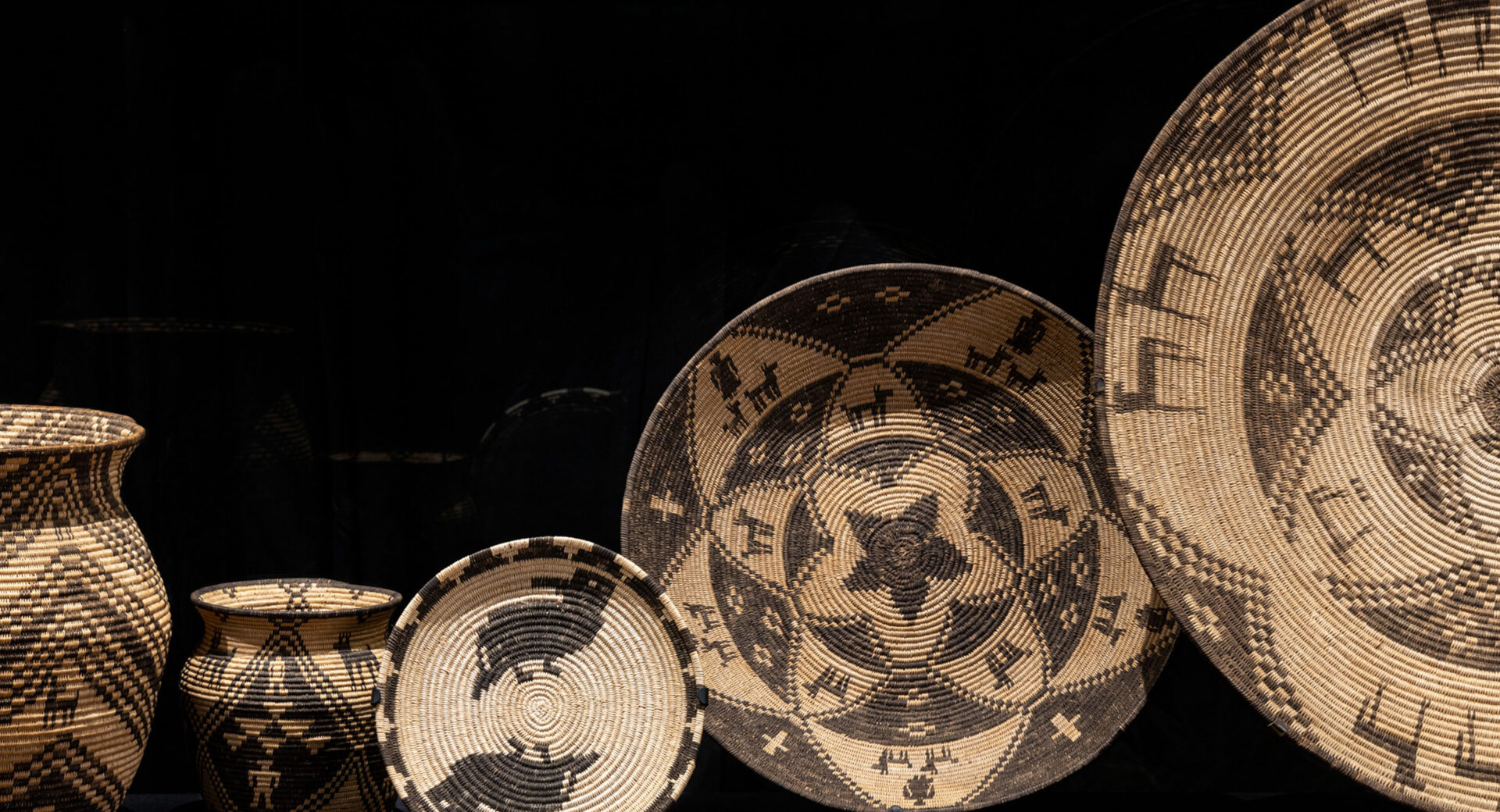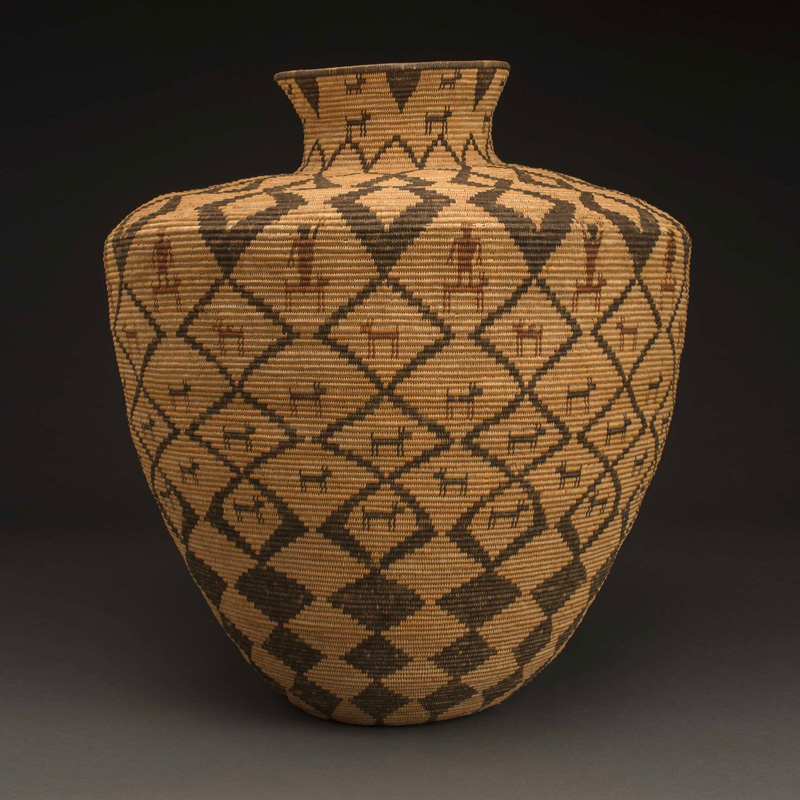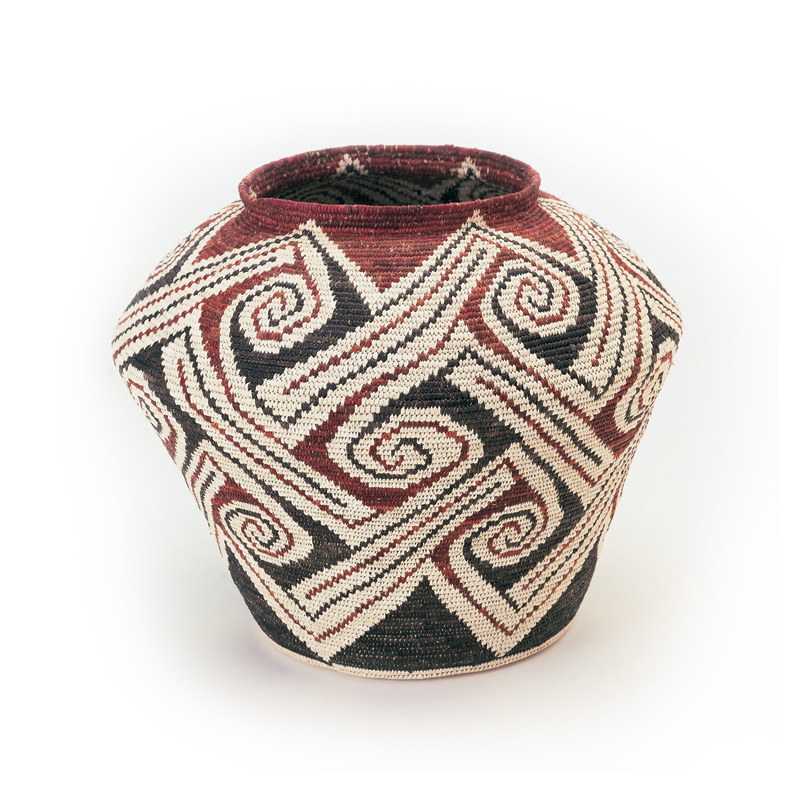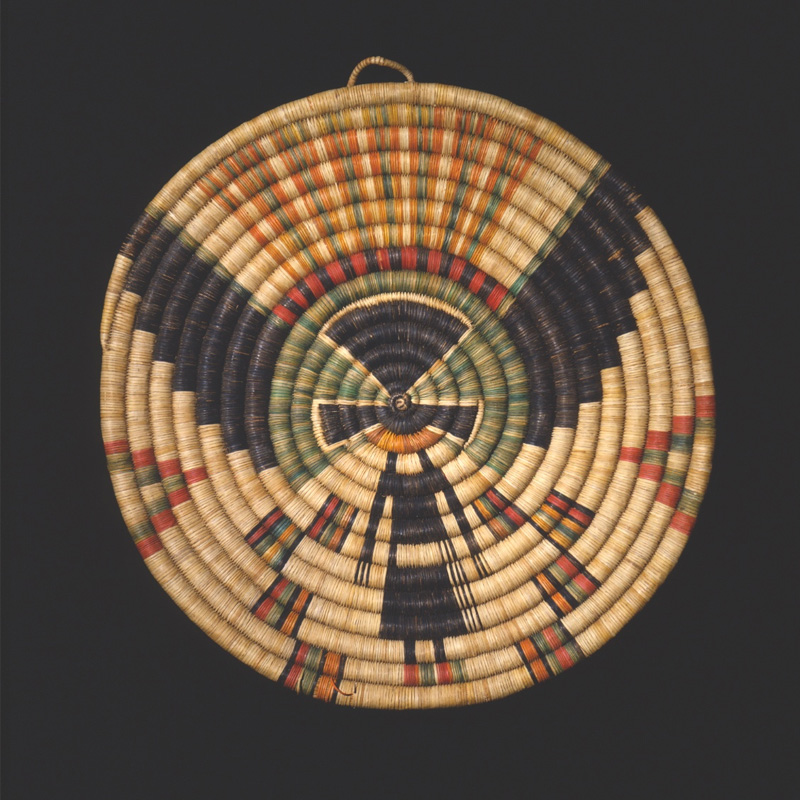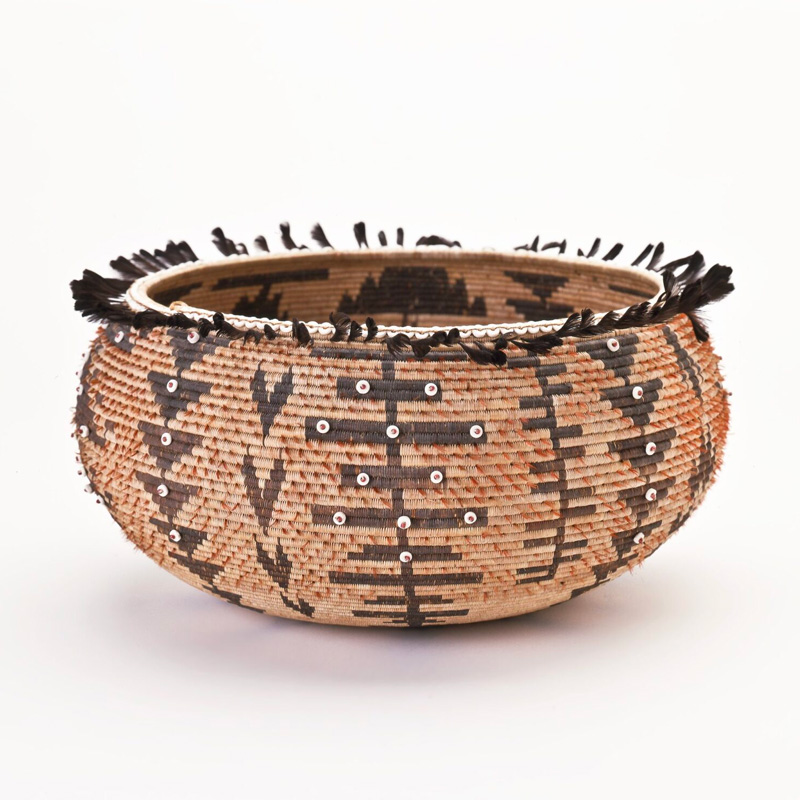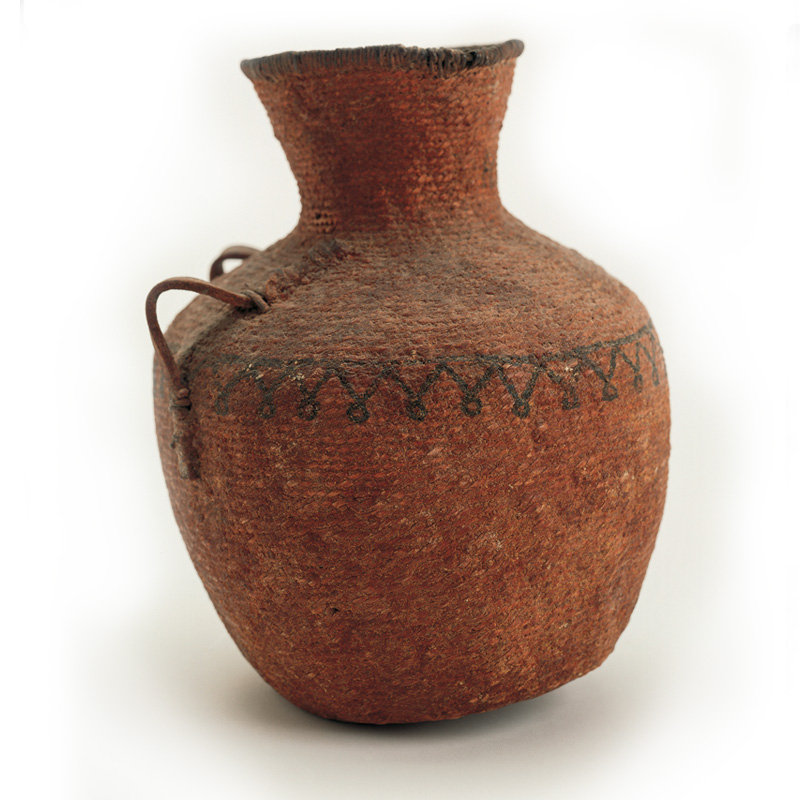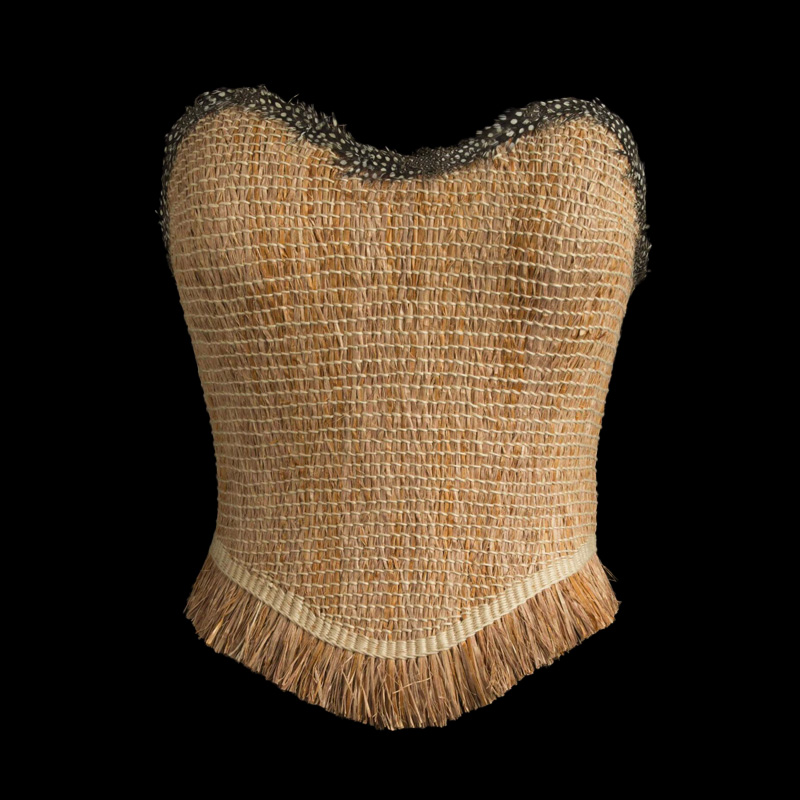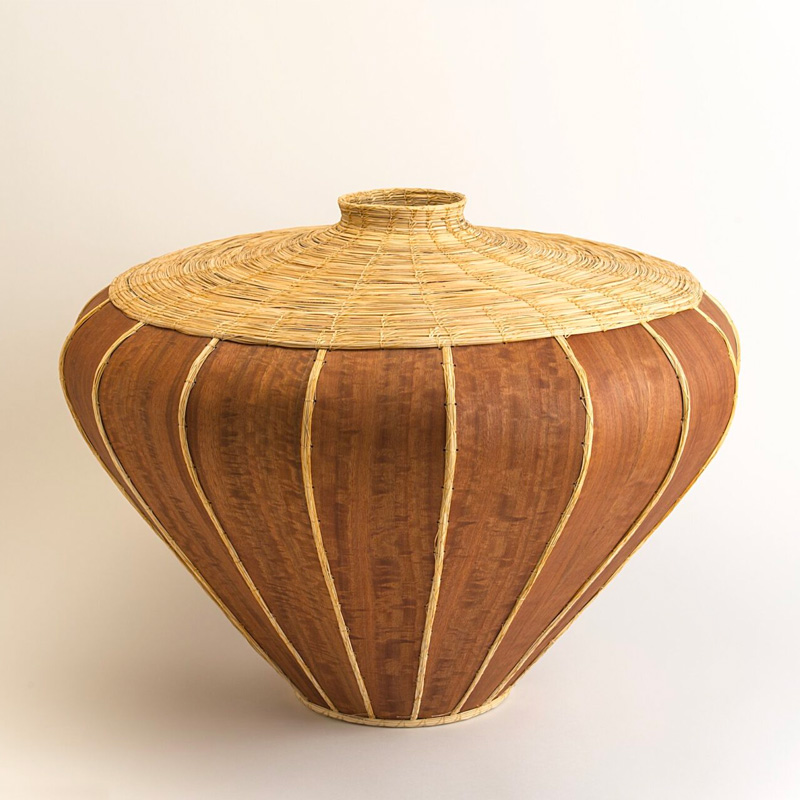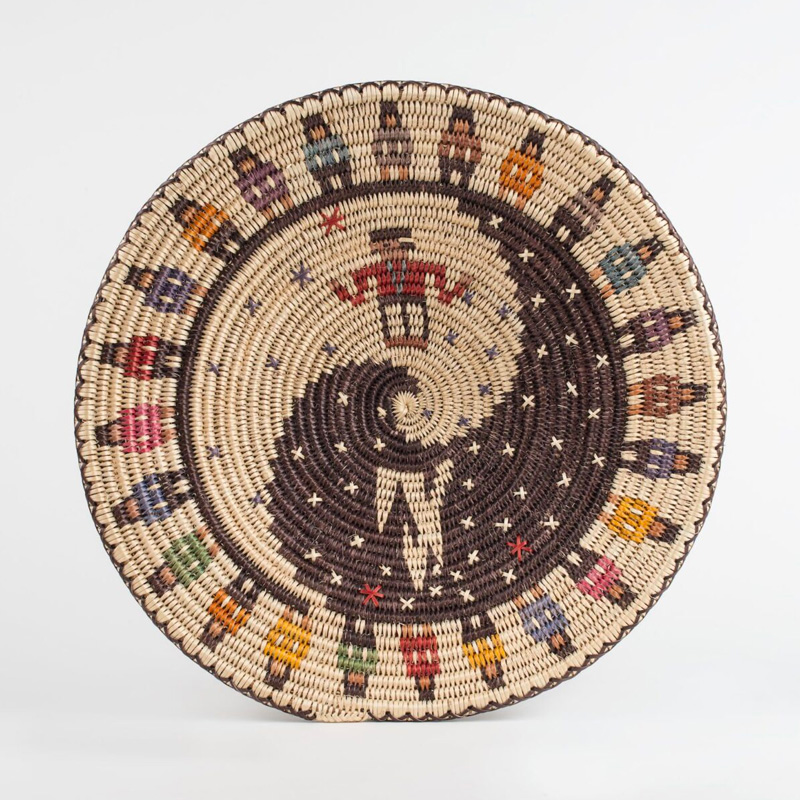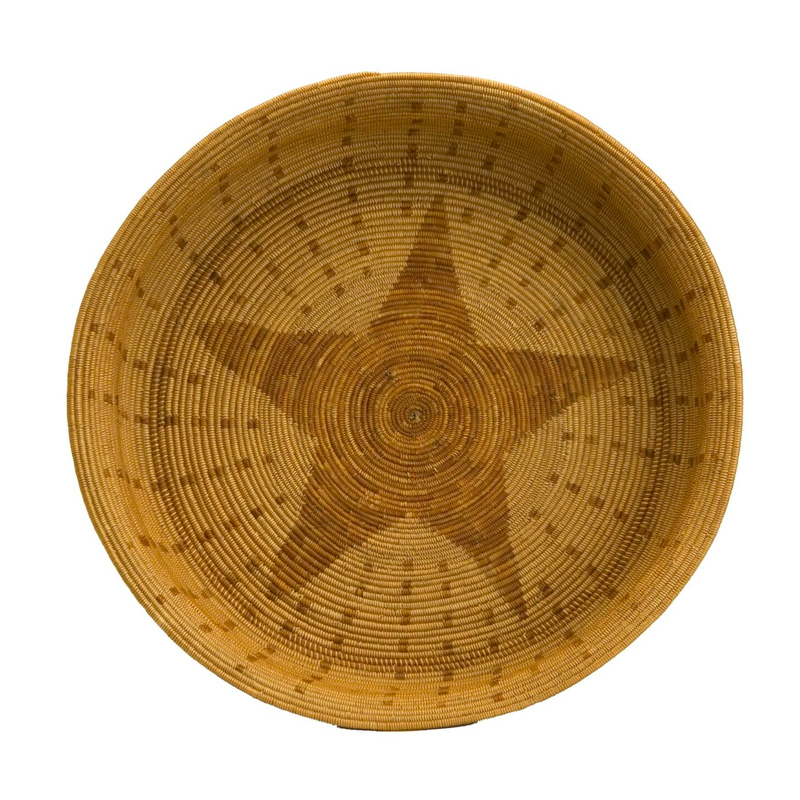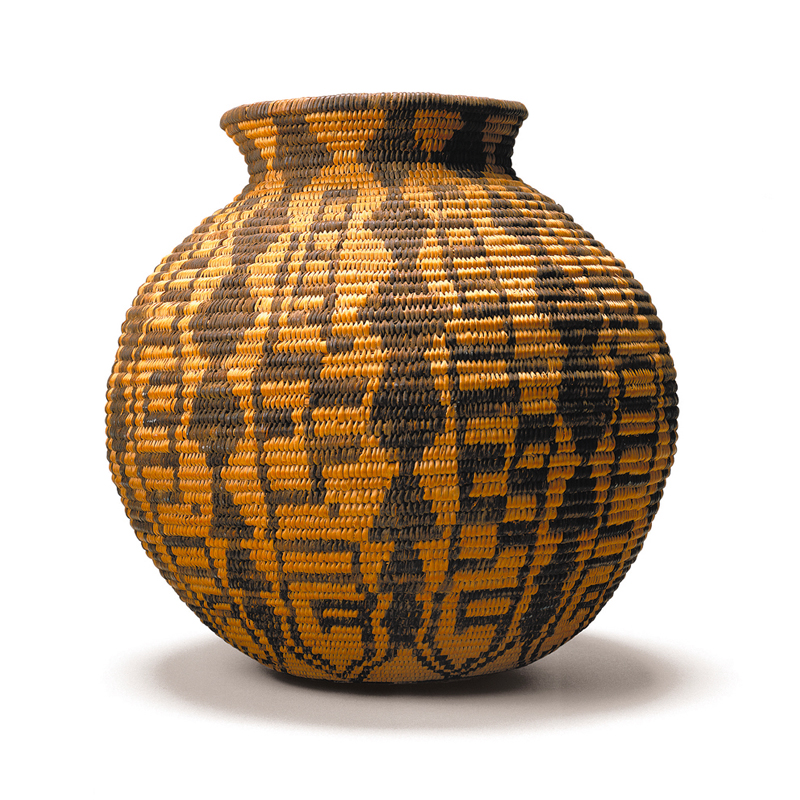The Basketry Collection
Baskets are among the earliest containers used in the West, predating pottery. They often served as basic containers for food gathering and preparation, and some baskets were even made to hold liquids. In Arizona, groups such as the Western Apache coated baskets with pitch and used them as water bottles.
Basket making for utilitarian purposes was impacted in the early 1900s by the commercial manufacture of containers. Afterward, baskets were woven primarily to be sold to collectors.
Materials for American Indian baskets, whether the basket is utilitarian or woven to be sold, are harvested from growing plants. A basket maker needs to know where the useful plants are located, how and when to harvest them and how to prepare the fibers.
Basketry Collection Highlights
About the Heard Museum Art Collections
The Heard Museum art collection concentrates on the lives of Native peoples and consists of more than 45,000 objects. The two focal areas of the collection are comprehensive cultural collections from the Greater Southwest and contemporary native fine art from North America. Key collections include Hopi katsina dolls; Navajo and Zuni jewelry, Navajo textiles, Southwestern ceramics from prehistory to the present and baskets from the Southwest, California, the Great Basin and the Northwest. The approximately 4,000 fine art works in the Heard Museum collection document the American Indian Fine Art Movement from the 20th century to the present, and include work by some of the finest historic and contemporary American Indian artists.

